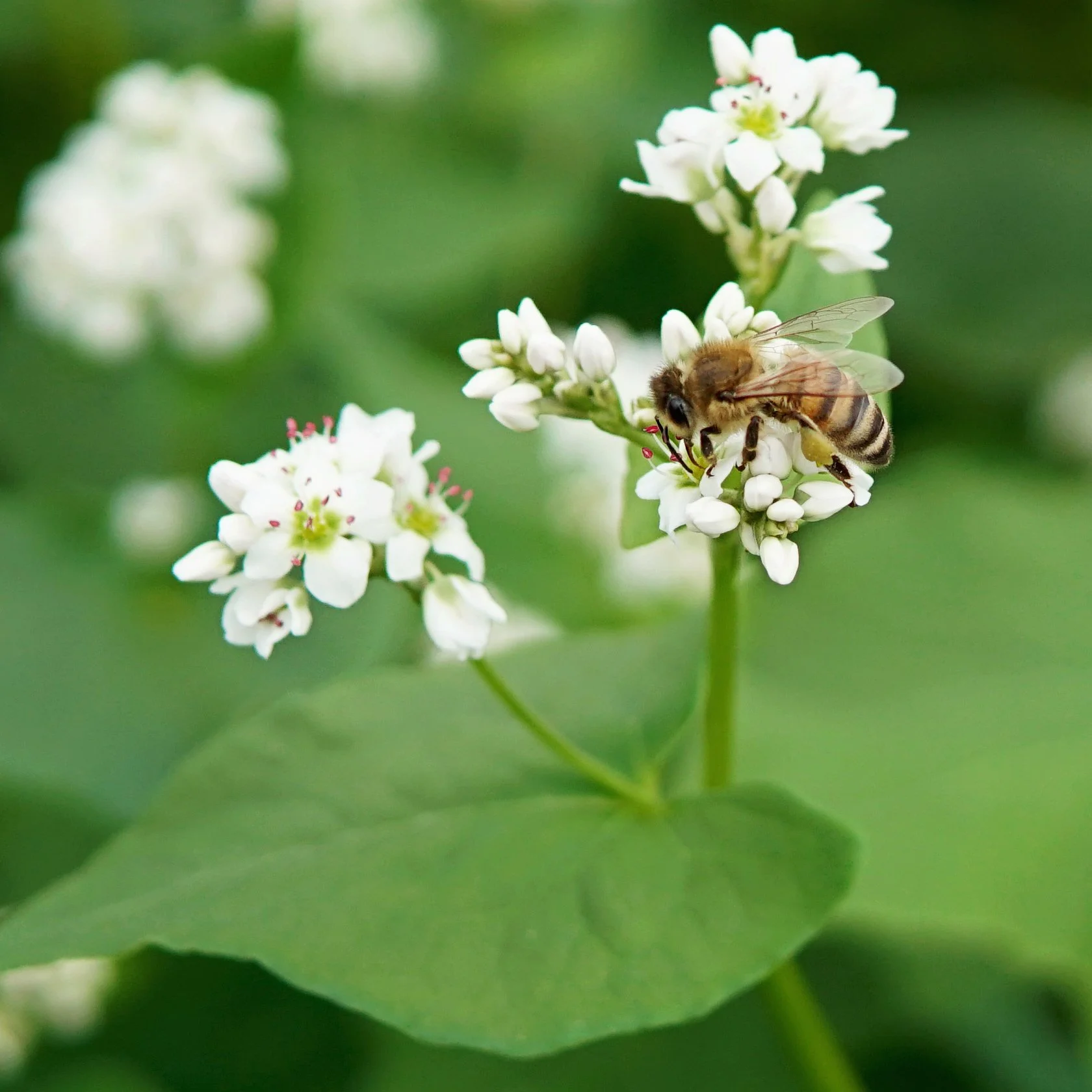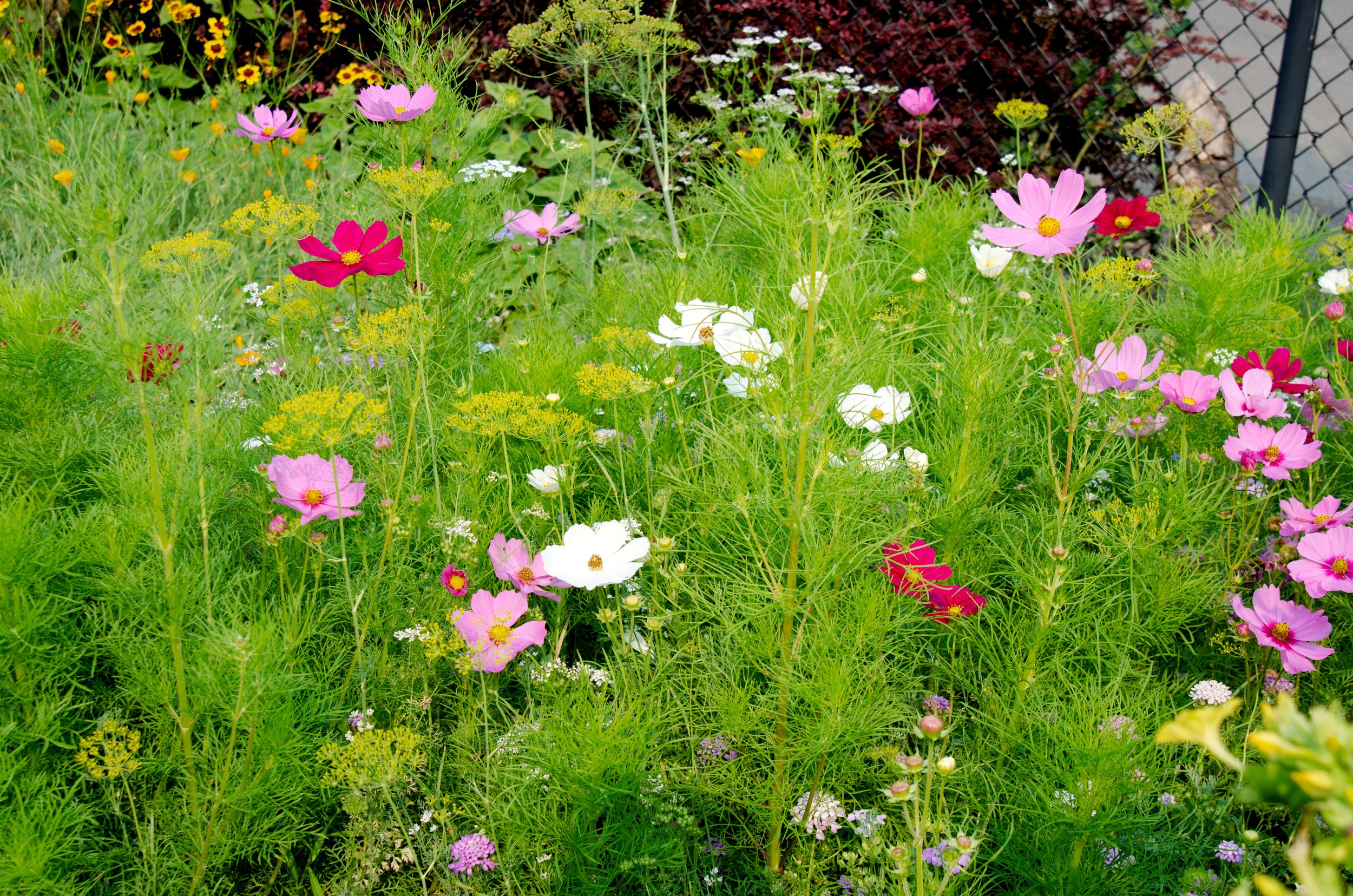Befriending Beneficial Bugs
Insects reign over a huge portion of the animal kingdom with boundless numbers of species and equally numerous integral positions in the ecosystem. Insects perform countless duties from breaking down organic matter; providing food for reptiles, mammals, birds, and other insects; and, of course, pollinating flowering plants. Without insects, life as we know it would cease.
As gardeners, we accept the reality of living and working with insects as partners in the garden. With that in mind, it’s a wise gardener who provides for the insects that work to keep the garden healthy and productive. Encouraging and supporting the populations of pollinating insects as well as the predatory types that feed on detrimental bugs is a worthwhile endeavor and should be integrated into a balanced garden’s biology.
The good news is that attracting and fostering beneficial insects is a straightforward process. First, provide plants that attract/feed/house the bug buddies, make sure they have water, and refrain from broad-spectrum insecticides.
Plants for Beneficials
Food For Pollinators
Plants that produce pollen and nectar are what pollinators seek. By cultivating pollen and nectar-producing flowers, you’ll be attracting larger numbers of pollinating insects to your yard who will also visit your vegetable flowers. Since a squash flower, for example, needs to be visited numerous times to be adequately pollinated and produce fruit (non-parthenocarpic plants), it’s a wise strategy to plant crops like borage, sunflowers, buckwheat, marigolds and other bee-friendly types in close proximity to squash. Offering a variety of rich pollen and nectar sources is akin to presenting an all-you-can-eat smorgasbord for your pollinating buddies, and once the word gets out, you’ll have swarms to feed!
Bees visiting a squash blossom
Bee on buckwheat flowers
Native Plants for Native Bugs
Incorporating native plants in your yard is an ecologically sound practice. By design, natives are acclimated to the climate and soil, so they generally don’t require the coddling (irrigation, pest control) that non-native species might. These plants have evolved concurrently with native fauna, providing forage and shelter for their animal neighbors. Hosting strong native populations of plants will mean a naturally care-free landscape and an invitation to a good biodiversity of native wildlife. Native birds, bats and other native insectivores will help keep detrimental bugs at bay leaving room for pollinators and predatory insect to thrive. Certain very specialized species of insects rely solely on specific native plants for food during one or more stages of their lifecycle. A good example of this is the Zebra swallowtail butterfly, whose larvae depend on foliage from the native Pawpaw tree as their single source of food. Monarch butterflies are another popular case, where they require milkweed as a host plant for their young.
Habitat Building for Predatory Insects
Some garden favorite insects are voracious hunters of plant-eating bugs. Ladybugs, lacewings, trichogramma wasps, and tachinid flies come to mind. These insects require plants to support selected stages of development, so offering the plants that serve as shelter or food for these species will go a long way to letting Mother Nature keep destructive insects in check. For instance, try planting dill and cosmos to attract adult lacewings, as they feed on nectar from the flowers. Once they feel welcome, they’ll lay eggs, which will hatch larvae that are ravenous consumers of aphids, mites, and many more pests.
Our Beneficial Bug Mix is great for attracting lacewings, ladybugs, and more to your garden!
Water is Life
Every garden needs water, and insects get thirsty, too. It’s not an unusual summertime site to see a circle of honeybees bellied-up to a puddle of water. Dripping hose bibbs, pet water dishes and ponds will attract parched wildlife including insects. A shallow birdbath with rocks or pebbles breaking the surface is an attractive and practical water source for insects. Pebbles offer a perch for the bugs and will help limit the occurrence of drownings. Keep the supply clean, and monitor it for new visitors like butterflies and bees.
Insecticides are a No-No!
Non-specific insecticides will kill any bugs, not just the bad ones. Be very aware of even products certified for organic use, as these compounds may be effective on any insect that they contact. For instance, relatively innocuous diatomaceous earth may kill ants, but it doesn’t discriminate, and ladybugs can fall victim to its action just as easily as ants. Use insecticides only if all else fails, and work scrupulously, beginning with the most benign, like insecticidal soap. Resort to stronger products only as a last-ditch effort.
Welcome bugs to your garden! This is a pupating ladybug (kind of weird looking) but definitely a good bug!
It is all too often that a natural human response to seeing a bug is one of revulsion. As gardeners, we must learn to be stewards of our environs and welcome all forms of life into it. When one species overwhelmingly populates and outcompetes others, the system betrays its state of imbalance. Balance is key to a healthy garden, so strive for that end. Remember, it’s ok to see some bad bugs around; they feed your predatory insect friends, so welcome them all (in moderation). Encourage the good bugs, and they’ll work with you to create a successful garden that will reward you with bounty, beauty, and life!
Author: Kat B.







